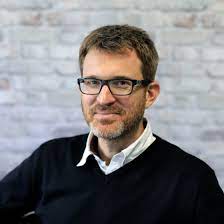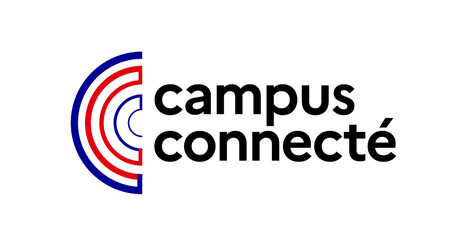How did the Connected Campuses scheme originate?
In 2017, the Minister of Higher Education, Research and Innovation, Frédérique Vidal, noticed that the great majority of students, in particular in rural areas, were asking for the training course closest to where they lived, even when they might actually be interested in a different course and have different career objectives. The aim then became to decompartmentalise and make all training courses available thanks to digital technology. It was when he was working on e-mobility issues that Erwan joined the third places and education working group at the end of 2018: to set up training and study centres without calling into question existing other decentralisation initiatives in higher education, such as university outposts (e.g. Grenoble/Valence). The concept of the third place is all the more appealing if it cannot be linked to the local university.
Thanks to the work done with the ANCT on third places, we were focusing our reflections on the creation of places to host distance learning.
The context of the global public health crisis then considerably accelerated progress with e-mobility subjects.
How the scheme developed in a few dates
2018: third places and education working group. June 2019: choice of the territories for the experimental projects. September 2019: experimentation over a 1-year period of 13 proposals with 130 students signed up in spite of the very tight calendar. 10 projects will be confirmed after the experiment. January 2020: launch of the Call for Projects with a provisional budget of €25 million as part of the PIA3 “Territoire d’Innovation Pédagogique” (Educational Innovation Territory) scheme. There was no specific pre-defined type of target territory for responses to the call for projects, although priority was given to rural projects, in particular as part of the Rural Agenda, as were territories where decentralised government services were more scarce, especially higher education.
There was a favourable window of opportunity and things progressed very fast. Within a few months, Connected Campus went from a working group to a network of 100 sites that had opened in Metropolitan France and the overseas departments.
According to Erwan Paitel, third places consist of two basic components: a structure and people. A structure in the form of place available to the population and a collective that creates a service offering. I share the idea of Patrick Levy-Waitz, President of France Tiers-Lieux, who defines third places as the new “MJCs” (youth and cultural centres) for the 21st century, within a much wider remit, which encompasses education, but also the vitality and development of the local area. Based on that notion, Connected Campuses can be part of third places that offer a whole range of other activities.
What is a Connected Campus?
- The spaces accredited as Connected Campuses allow you, close to home, to take higher education distance learning courses that lead to the same quality and recognition of degrees as on a university campus.
- They are study centres that provide connected, fully equipped classrooms, where, using your own computer or the computers provided, you can follow the distance learning course you have registered for with a university or higher education institute. You are supervised and supported by a tutor (1 for 10 students).
- These connected spaces are provided by local authorities.
What points have you identified that require vigilance?
- A strong need for support staff
- The different stages, because they are accredited at different times, take time to roll out
- The MESRI (Ministry of Higher Education, Research and Innovation) team has multiples roles, as facilitator, observer, advisor, provider of support and creator of peer-to-peer interactions in order to ensure that the whole setup runs efficiently and is sustainable
- This issue of the sustainability of these places so they can provide support as the scheme is structured
If you were to pick out one key objective of the scheme, what would it be?
To contribute to citizens’ impression that the State wants to support every citizen in a positive way. Third places provide a shortcut for the link between the State and users of its services. The main objective is to offer all students, particularly in rural areas, Urban Policy neighbourhoods and the overseas departments, the possibility of succeeding in higher education, thanks to progressive integration.
What are the key points to remember about Connected Campuses?
- In the field, there are fundamentally different situations, and that makes for a rich network of connected campuses which vary according to ideas and skills of those involved and take into account the specificity of each territory so that they can offer a locally adapted service. This is in line with the logic of decentralisation of the government services.
- The idea is to get populations who have grown used to the loss of local State services back on board: a period of observation is indispensable to be able to propose appropriate solutions and support mechanisms.
- The project sponsored by the Polynesian government to develop 5 connected campuses on 5 different islands is an ambitious one that goes hand-in-hand with the roll-out of superfast broadband to those islands.
- A two-way logic: the local authority can provide a basic or a wider range of services (canteen, organisation of activities, free transport, etc.). Alongside that, the MESRI offers a “student” legal status and provides a detailed mapping of the public services available (access to healthcare facilities, social aid, culture passes, etc.).
- We have supported candidacies with the decentralised departments, though the Prefectures and local education authorities (rectorats), which have the necessary overview of the territory.
- The linking of higher education through connected campuses in town and cities that already have a higher education offering, in conjunction with the university and the local authority: Marseille, Carcassonne, Brive.
How is the scheme funded?
The Connected Campuses schemed is funded under the State Investments for the Future programme, via the Caisse des Dépôts. The Banque des Territoires sets up the contracts and tracks the budgets. The MESRI providers the higher education competency acting as the organiser of the connected campus services.
A favourite aspect of the Connected Campuses scheme?
The ones we have opened in prisons, in Rennes and Caen, which we have worked on with the Ministry of Justice and the Prisons Department, and where there are high stakes as regards the rehabilitation and reintegration of prisoners, the aim being to turn prison into a constructive instead of a punitive experience so that prisoners can prepare their return to society. Training and skills building will definitely facilitate prisoners’ social reintegration.
An emblematic project you can tell us about?
The Faitout Connecté project in Aisne. This is both a third place and a connected campus: a great example of how an extra service – training – can be integrated into an existing third place.
« I like the idea of turning third places decentralised public service hubs, places where all kinds of populations come together and mingle. Thanks to connected campuses, young people can (again) become active contributors to local life, drivers of the local economy and territorial vitality, entrepreneurship and social life. And what’s more, that territory can offer new services to its young people, through the third places. This is a profoundly interesting time. A chance for students not only to find services they need in the tiers-lieu, but also at the same time to be a service for other citizens in the territory. It’s a very philosophical aim in the end! »

